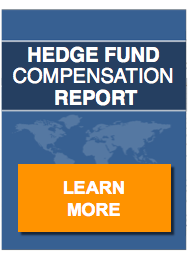Most readers have, no doubt, read or heard Warren Buffet’s tirades against hedge fund fees and the wisdom of investing in index funds, regardless of whether the investment is large or small.
Interestingly, the “oracle of Omaha” does not follow his own advice, as Berkshire Hathaway is not invested in index funds. Moreover, pension funds, endowments and most high net worth individuals have chosen to ignore Buffet’s advice, just as he ignores his own.
The media, on the hand, which never tires of bashing our industry, delights in perpetuating the Buffet inspired myth of exorbitant hedge fund fees charged by greedy hedge fund managers.
The Truth about Management Fees
Two-and-twenty fee structures simply do not exist any longer. Management fees are averaging 1.5 percent and performance fees are averaging 17.3 percent in the hedge fund industry.
Hedge funds are, by definition, an actively managed fund and management fees are intended to compensate those individuals actively managing the investment. Most, understand that talent retention is a function of competitive compensation, which is the reason index funds will always be a cheaper alternative to hedge funds in terms of management fees. In truth, it isn’t difficult to justify management fees in the hedge fund industry.
The Truth about Performance Fees
Performance fees, at first blush, seem impossible to justify…particularly at the level of 17.3 percent! Those unfamiliar with the industry will be shocked to learn many hedge fund investors never pay a performance fee, and those who do pay, are delighted to do so.
Here’s why—high water marks and hurdle rates. The media leads one to believe that any gains made on one’s investment is subject to a 20 percent performance fee. Hedge fund investors are not stupid people, which is why performance fees are subject to hurdle rates and high water marks. These act in concert to ensure that performance fees are only incurred for performance that exceeds the expectations of the investor.
What Is a High Water Mark?
High water marks are established to protect investors from paying performance fees to the hedge fund when such payment is unwarranted based upon past performance. For example, in year one, an investor deposits $1 million in the fund. Over the course of that year, the fund loses 10 percent of the investment, leaving the investor with no gain and a $100,000 loss. By virtue of the high water mark, the investor will pay no performance fee until the hedge fund has recouped the loss.
What Is a Hurdle Rate?
In the simplest terms, a hurdle rate is the minimum rate of return acceptable to the investor. Any gains exceeding that agreed upon rate of return will be subject to a performance fee, provided the high water mark is not in play.
Final Thoughts
Because Warren Buffet is a brilliant investor, other perceptive investors have apparently elected to do as Buffet does, not as he says. It is for this reason that hedge funds have achieved record assets under management.


